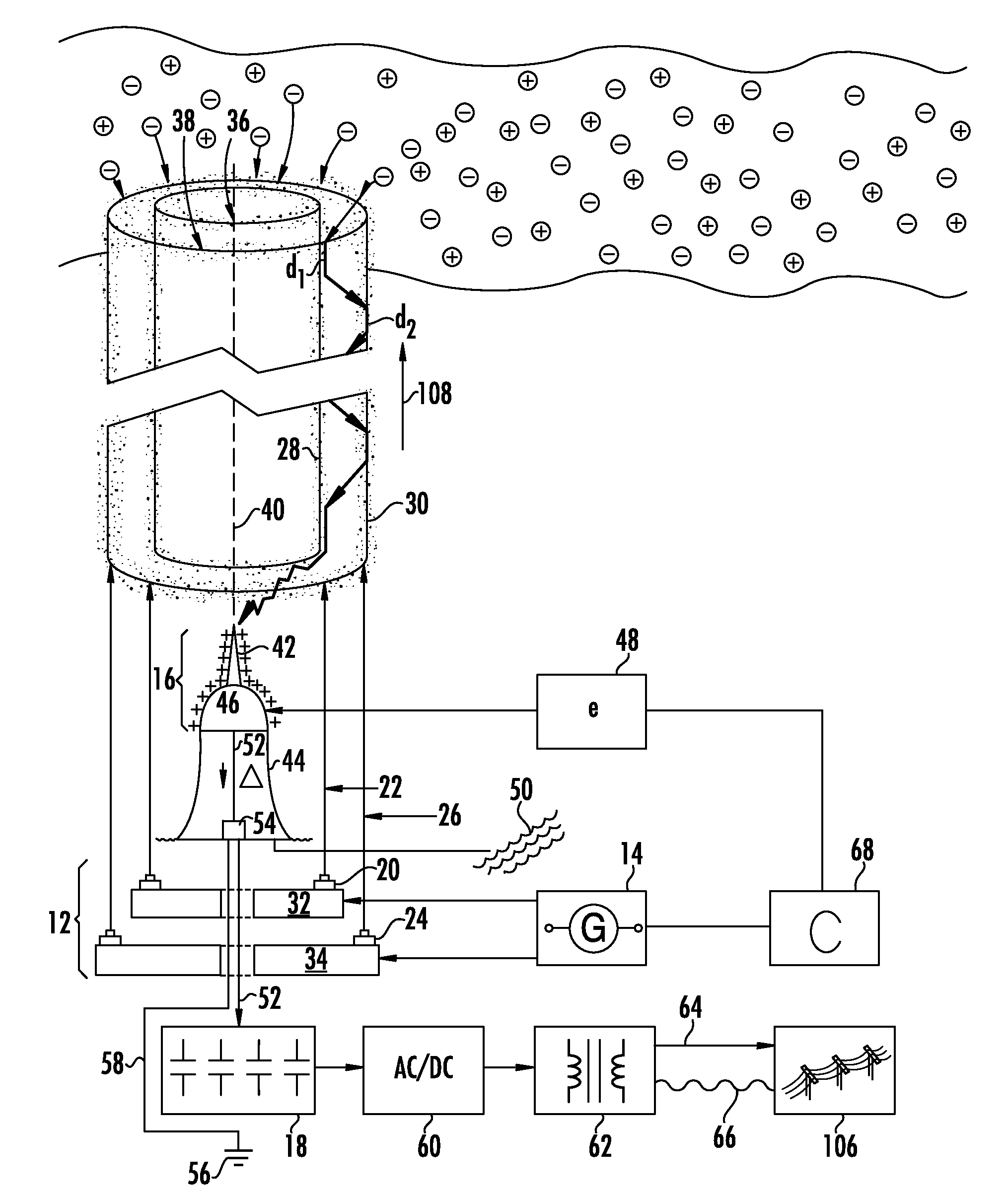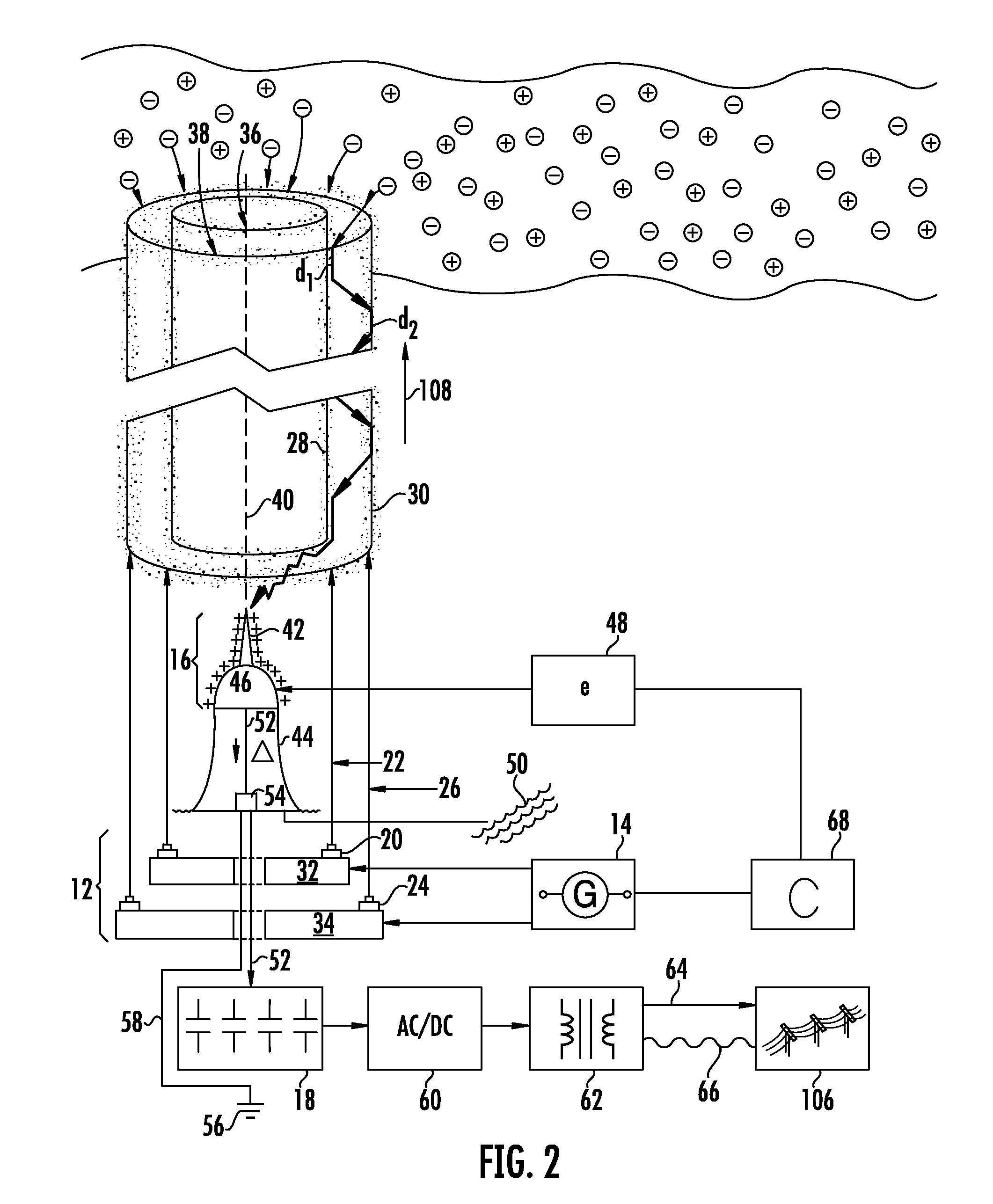Charged particle induction from ionosphere to ground
a technology of ionosphere and induction of charged particles, which is applied in the direction of electrostatic charges, emergency protective arrangement details, electrical equipment, etc., can solve the problems of increasing world demand, increasing the cost of petrochemical energy, and needing to develop alternative clean renewable energy supplies, etc., to achieve low resistance, resistance (and voltage drop), and safe control of lightning strike discharge
- Summary
- Abstract
- Description
- Claims
- Application Information
AI Technical Summary
Benefits of technology
Problems solved by technology
Method used
Image
Examples
Embodiment Construction
[0025]Reference is now made to FIG. 1 in which there is illustrated a highly simplified schematic view of energy E being transmitted from the ionosphere 100 through atmosphere 102 via concentric plasma channels 36,38 generated by the subject apparatus which is designated generally by reference numeral 10. Apparatus 10 is situated on the earth's surface 104 at preferred locations herein described.
[0026]Referring to FIG. 2, apparatus 10 is comprised of three primary components: 1) a wireless conductive channel producing means 12 or “atmospheric auger” connected to an energy source 14, 2) charged particle receiving means 16 and 3) energy storage means 18. Each primary component is described in detail below, together with secondary components of the subject apparatus.
[0027]Wireless conductive channel producing means 12 (hereinafter “plasma channel producing means”) is comprised of first ionizing beam emitting means 20 used to create a first ionizing beam 22, and second ionizing beam emi...
PUM
 Login to View More
Login to View More Abstract
Description
Claims
Application Information
 Login to View More
Login to View More - R&D
- Intellectual Property
- Life Sciences
- Materials
- Tech Scout
- Unparalleled Data Quality
- Higher Quality Content
- 60% Fewer Hallucinations
Browse by: Latest US Patents, China's latest patents, Technical Efficacy Thesaurus, Application Domain, Technology Topic, Popular Technical Reports.
© 2025 PatSnap. All rights reserved.Legal|Privacy policy|Modern Slavery Act Transparency Statement|Sitemap|About US| Contact US: help@patsnap.com



